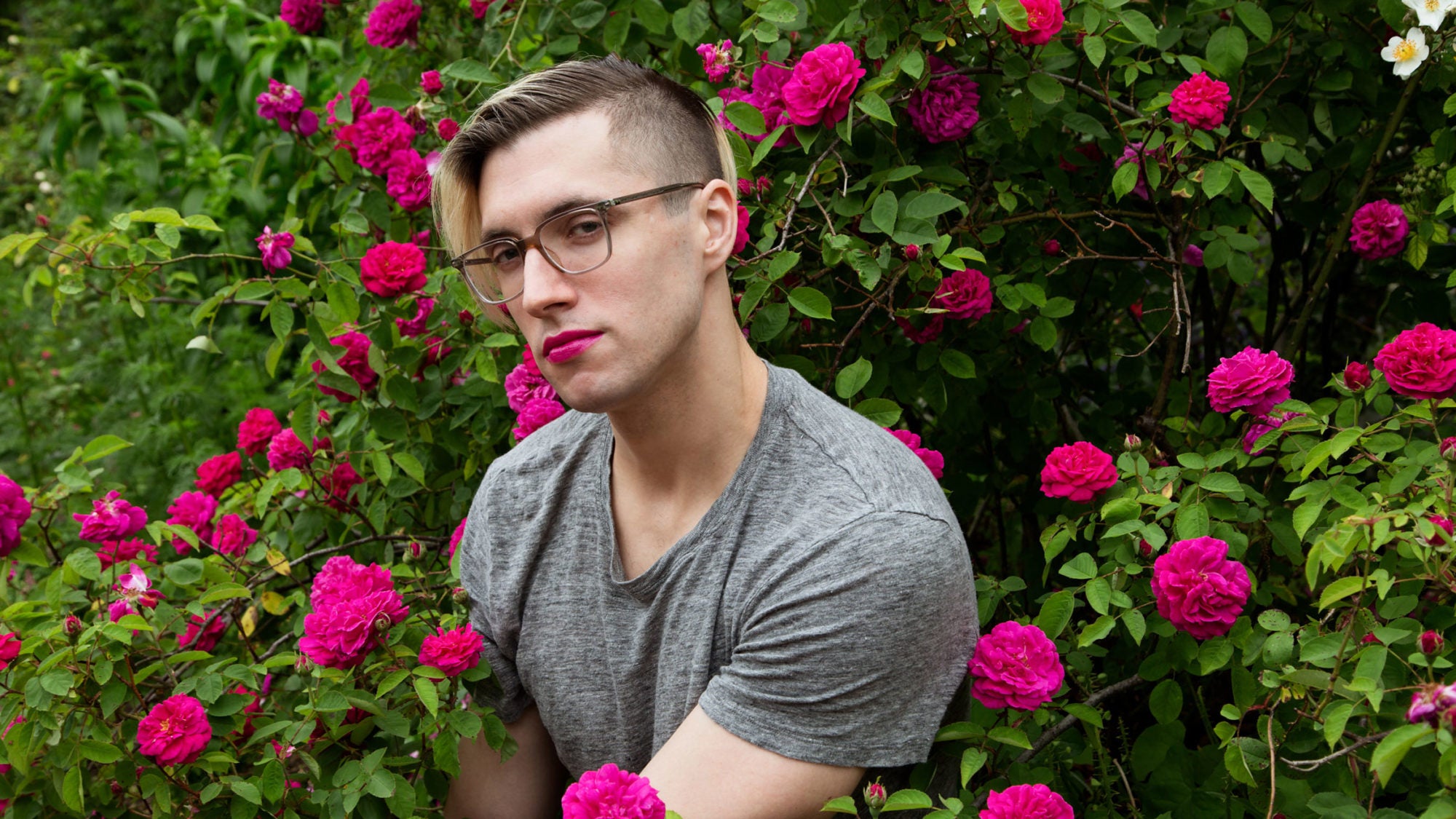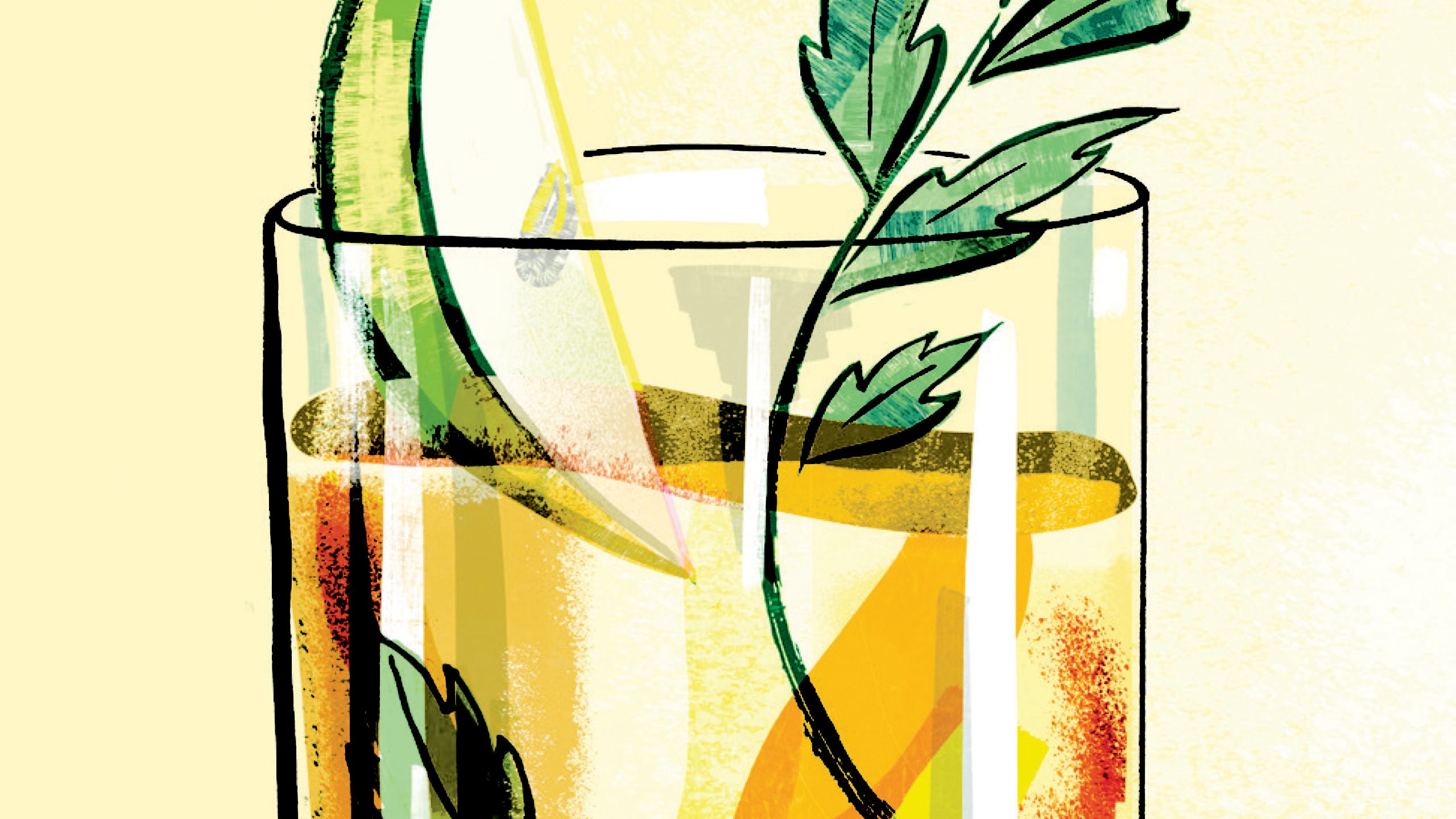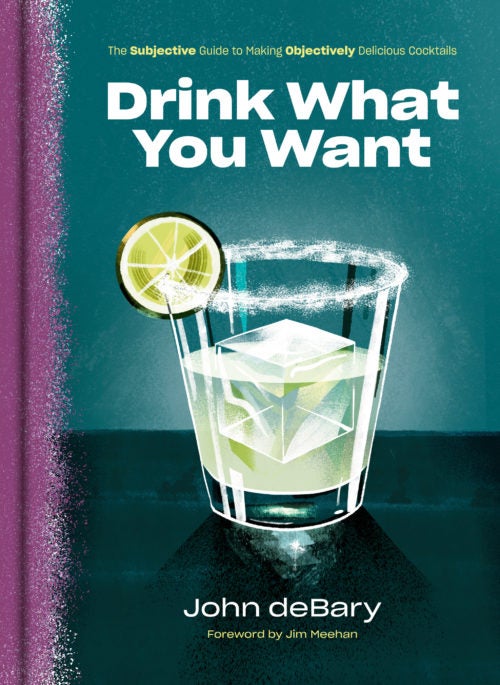
The author and former Momofuku bar director John deBary has strong opinions about the Singapore Sling, swim-up bars, and pisco (you should buy a bottle).
There are so many Kold-Draft cubes of wisdom in John deBary’s hilarious and heretical cocktail book Drink What You Want, which was published in June and continues to keep this no-alcohol-drinking writer entertained about the world of drink: the deep bench of drinks one can make at home with a few (or many) bottles and syrups and fruits laying around, the ongoing jokes about an industry that takes itself too seriously. DeBary came up as a bartender during New York’s “cocktail boom,” after happening into an interview in 2008 at Jim Meehan’s Please Don’t Tell in the East Village. For a Columbia grad with the LSAT in his sights, the bartending job was just that—a job—but it sent deBary down a path of discovery. “I was the queen of ‘fake it ’til you make it,’ he writes in the book’s intro. And faking it paid off.
An academic at heart, something about these old drinks clicked. To commit drinks to memory, deBary wrote out, in longhand, the PDT recipes neatly stored in a paper Rolodex behind the bar. He read the great cocktail books lining the bars of the time: Gary Regan’s The Joy of Mixology, David Wondrich’s Imbibe!, and David Embury’s The Fine Art of Mixing Drinks. He eventually started inventing his own drinks (many of which are featured in the book, including the blue and boozy and very deBary Shark cocktail), and he ditched law school for a career in cocktails.
But deBary stayed grounded, avoiding the posturing and flash of professional mixology during the late ’00s, and went to work with his old college friend Don Lee at Momofuku Ssäm Bar (the father of the restaurant’s first cocktail menu), eventually rising to become David Chang’s first bar director, a position he held for five years. Today, deBary is busier than ever. He’s launched a non-alcoholic drinks company, Proteau, and he’s the cofounder and president of the Restaurant Workers’ Community Foundation, an organization helping support hospitality industry professionals through these current tough times. DeBary, along with his husband, Michael Remaley, and a board of industry vets, has partnered with Houston’s Southern Smoke Foundation to raise more money and assist in advocacy, grantmaking, and impact investing for restaurant workers around the country.
“After reading this book, I want you to have the knowledge, skills, and confidence to make drinks on your own,” deBary writes in the introduction. That knowledge may translate to realizing that a Highball is not just a whiskey soda. “A whiskey and soda represents a resignation to sloppiness―a free pour of cheap whiskey and a careless splash of limp soda―whereas a Highball draws from a long-standing Japanese tradition of precision.” It may also reaffirm your love for the underrated Singapore Sling (“It’s never been the subject of a breathless trend piece, and that’s a damn shame”), or introduce you to a room-temperature flask cocktail: basically bourbon, sweet vermouth, Campari, crème de cacao, and water poured into a flask and shaken.
Drink What You Want also means write what you want, and deBary takes full advantage. “I love tonic water,” deBary writes in one of the book’s many footnotes. “If I could pull off an Oprah ‘I love bread!’ video but with tonic water, I would.” We spoke on Zoom about training bartenders, swim-up bars, and crimes against the margarita.
What was the writing process like?
It was a lot longer of a book, and I ended up cutting like 19,000 words. A lot of the cutting came in big chunks, and I would reference those points in the book where I write about something not being that important. It was my real-time realization that I wasn’t going to regale you with something too ornate or cryptic or whatever. I wanted it to be a book people could read first, as a book—then learn about cocktails.
You trained thousands of bartenders when opening ten Momofuku restaurants. What is the single bit of advice that you offered them that can be applied to the home drinks person?
The word is confidence, or even like fake confidence. A lot of people dining out just want to be taken care of, that’s it. It’s kind of like going to the doctor, and if the doctor sounds like they don’t know what they’re talking about, it’s kind of unnerving. It’s the same thing at a restaurant. You’re looking for someone to tell you what to think and how to feel, and, like, “This is how you’re going to have a really good time tonight.” A lot of times, people have asked me if a drink is going to be good. Like, if they mix two things together, is it just going to be good? I’m like, just try it! It probably won’t kill you.
How do you feel about Momofuku Ssäm Bar closing after 13 years?
I did the math, actually, and I think I’ve probably spent more time in that building than anywhere else in my life, except for the house where I grew up and I lived until I was 18. There was a period of time where I was helping out managing Booker and Dax, and I was at the building for like 60 hours a week—not to mention the three years I spent bartending, too. I can walk through it with my eyes closed and be able to tell you where the Windex is. It’s sad, the closing, but I’m kind of weirdly excited about what’s going to happen. I’ve been present for so much weird shit that either worked out or didn’t at Momofuku that it just created a whole new way of thinking about restaurants and eating for myself and for the public. So I’m kind of weirdly hopeful.
Do you want to own your own bar?
Uh, not really. It would have to be a swim-up bar.
Are you a big drinker yourself?
I’m actually doing a dry 2020, and it’s a really funny year to do a dry [laughing], but I also kind of love it.
Wow. That means for the whole year, you are taking yourself out of the game?
So, I mean, full disclosure, I did give myself a couple opportunities. I did some experimental quarantine drinking a couple of Fridays in March and was like, “No, I actually really enjoy not drinking,” especially during this time. For me, a lot of the fun part about drinking was going to restaurants. Being at home, I mean, is fine—but for me, I’m not getting a lot out of this, and it just totally fucked with my emotional well-being. So I don’t miss it at all. And actually, I’ve had to taste some drinks I’m making for videos and stuff, and it’s kind of like [makes gagging sound]. I’m like 12 years old again.
And you said it was a year-long goal?
I do these weird restrictions every year. Like, one year, I didn’t buy clothes at all. And last year, I only reread books. Every year, I pick something to restrict.
What’s the biggest crime in a margarita?
Mixto tequila. And now I’m going to talk shit about mixto tequila. A couple years ago, I went around to a bunch of tequila producers in Jalisco, and everybody sort of talked reverently about mixtos, about how they were using different products in it and yada yada. But then when we started actually tasting tequilas properly, nobody brought us mixto. So what does that tell you?
Most overrated drink?
Maybe the daiquiri? I mean, it deserves to be rated, but let’s say it’s 10 percent overrated.
The most underrated drink?
The Singapore Sling.
Why?
Because it’s so good, and so interesting. It’s got all this cool shit in it, and it has a nice, riffable template because there’s enough going on for there to be a few different versions, and there isn’t a canon version. It’s bitter. It’s fruity. I just love that pineapple, fruity, bullshit drink.
Your top three blue drinks?
The Shark, obviously. I mean, do I even know three blue drinks? Corpse Reviver No. Blue. And I don’t know if anybody ever does this drink, but a colleague of mine at PDT would do something called a Hulk Negroni, where you put blue curaçao into the Negroni, and it turns this greenish blue.
Most underrated spirit?
Pisco. I feel like it gets sort of pigeonholed into this one thing, but it has a really strong personality and is cool. And some of the stuff you can get in Peru that doesn’t really make it here is really interesting. They use all these different grapes that you’ve never heard of before. Some taste like fennel and anise, and others are super fruity. So that’s a really cool spirit.
What are some bands and songs that need to be on the playlist of your hypothetical swim-up bar?
Since college, I’ve been a big fan of playing actual files on iTunes—thank you, piracy—and I have a couple big playlists that are about a day and a half long that we would play at PDT. For songs, there is this band called The Whitest Boy Alive—Erlend Øye is his name. I would have that, and maybe his other band, Kings of Convenience. “Walking on a Dream” from Empire of the Sun would be another good one. And then “Only You” by Portishead. And “Caribbean Queen” by Billy Ocean. These are all songs that hit really hard at PDT [laughing]. It’s my frame of reference if a song is going to work. There’s a very specific acoustic landscape down there.
What’s the best thing you’ve ever drank?
The [non-alcoholic] pairing at Vespertine in Los Angeles is really good. Like, usually I can figure out what I am drinking, and why it is tasting the way it does, but with the NA pairing there, I was perplexed. You could tell that they were doing something with the process to alter the balance—there were all these interesting fruits and steeps. I was prepared for “whatever,” and this was very good. Like, I was mad it was so good.
This interview has been edited and condensed for clarity.

FOUR WAYS TO DRINK WHAT YOU WANT
Beached Mint-Lime Cooler
The trick for a beach-ready group cocktail is to make it the night before and let it chill in the freezer overnight. That way, it will be extremely, overly cold when you pull it out of the freezer, but if you time it just right, you’ll have a perfectly chilled drink ready to go as soon as you arrive―1½ to 2 hours from your departure.
Meal-Prepper Martini
There is something classic about the idea of coming home to a well-made martini after a long day. The only problem is that most of us don’t have someone waiting at home with a martini in hand, and rummaging through your empty apartment to make one for yourself is a little sad. Batching is the solution.
Death in the Afternoon
This drink represents, structurally, the bare minimum of what a cocktail is: two things mixed together. And yet, due to the underlying complexity of the absinthe, the resulting flavor is challenging and elevated. It demonstrates beautifully that you don’t need to make big moves in order to make a big impact.
Morning Mai Tai
A classic mai tai is a mix of rum with orgeat, an almond syrup, and other flavors. To re-create it as a safe-for-the-morning cocktail, I’ve used apple cider paired with ginger to echo the rich and spicy notes from the rum. Apple cider vinegar, if used judiciously, provides an eye-opening dose of acidity, along with additional apple notes.
MORE COOKBOOKS TO READ, BUY, AND COOK FROM
Carbs is a joyous tribute to one of our favorite food groups, and author and illustrator Laura Goodman serves as a wonderful tour guide.
Friuli Food and Wine is a colorful tour of the Italian region that bridges the Alps and the Adriatic Sea, featuring 80 recipes and wine pairings from a master sommelier and James Beard Award–winning chef.
How to Drink Wine is a smartly illustrated guide that will teach readers how to drink wine, but also how to order it and talk intelligently about wine with friends who also like to drink wine.
Random House has put together a free summer sampler of recipes from Ina Garten, Danny Trejo, Toni Tipton-Martin, Bryant Terry, Aaron Franklin, and more.
Last month, we published a fun conversation with Charlotte Druckman, author of Kitchen Remix.
